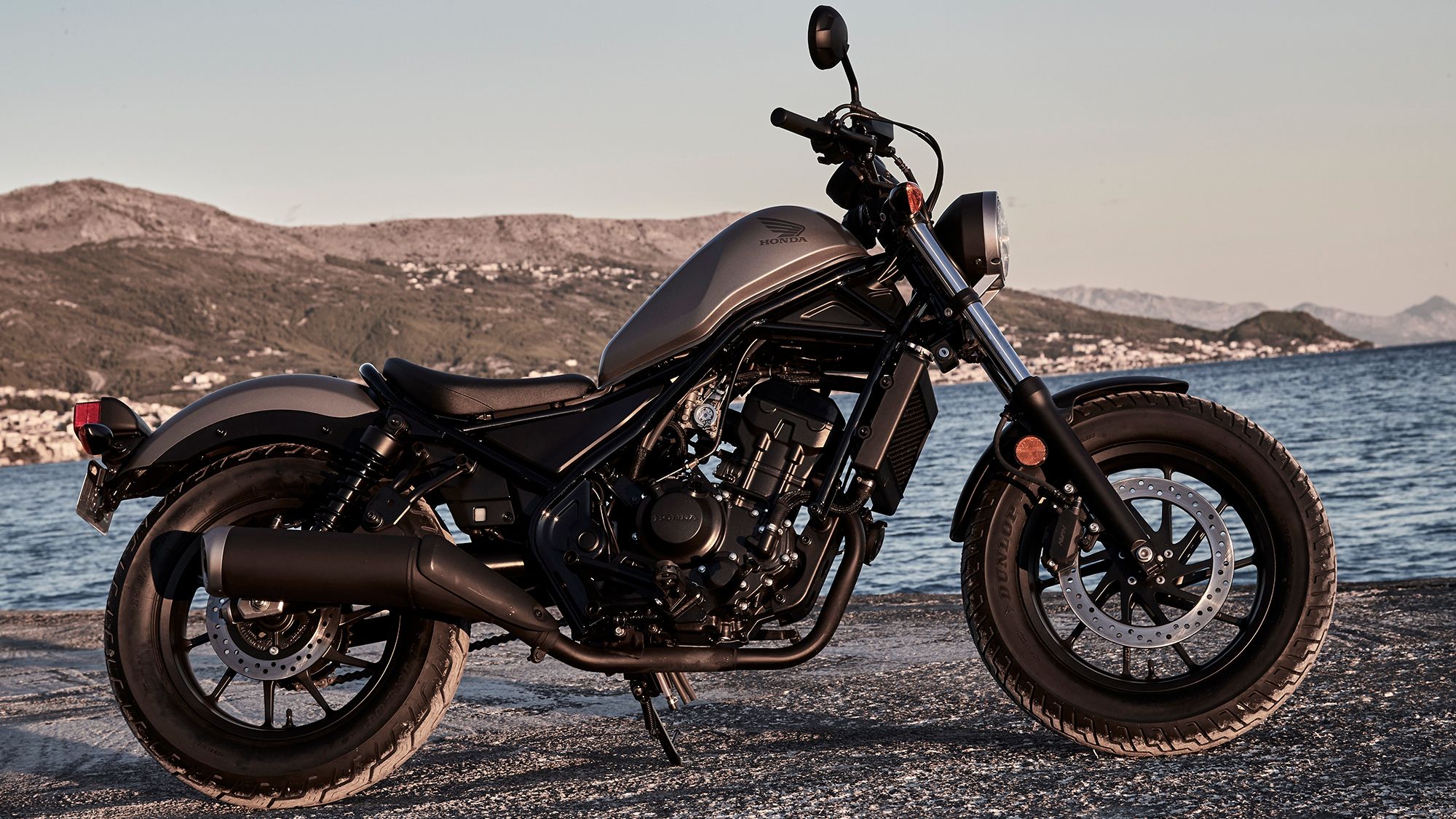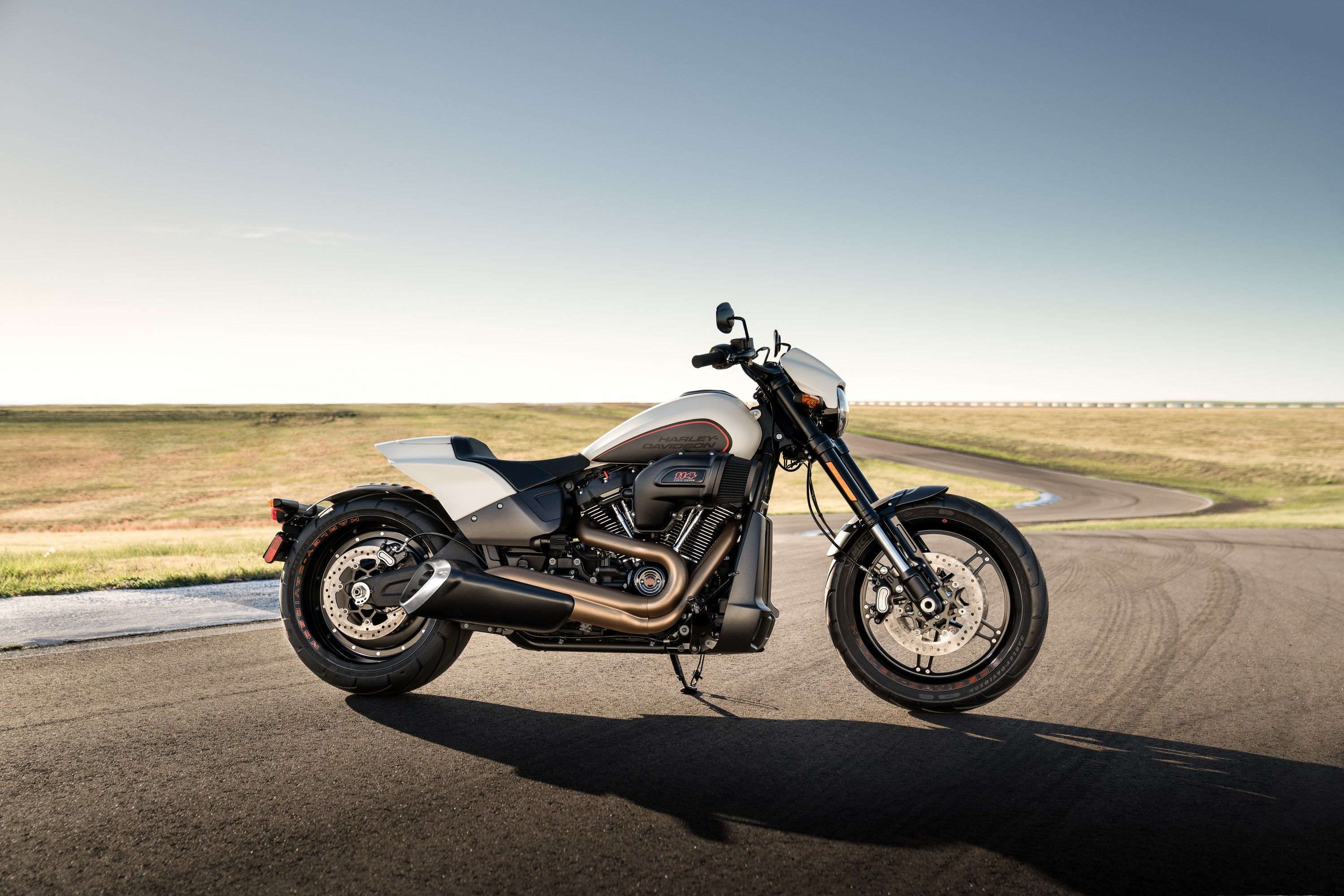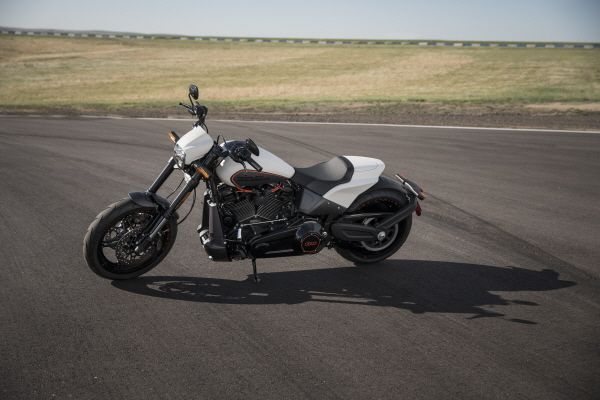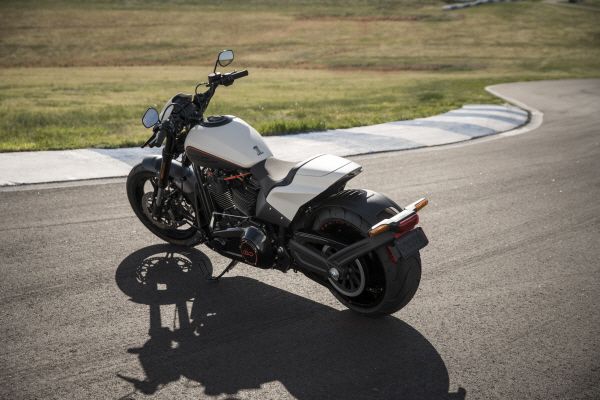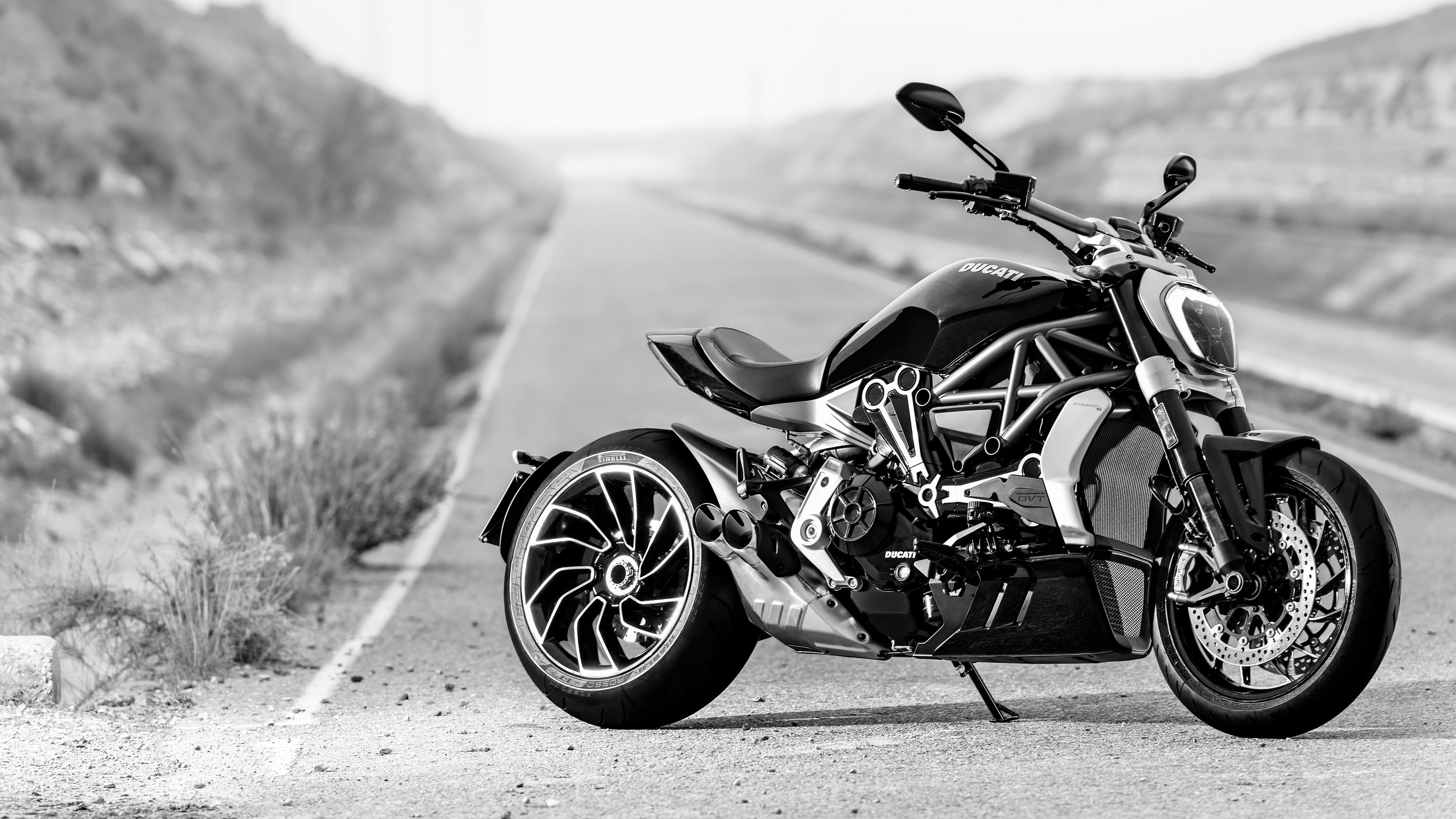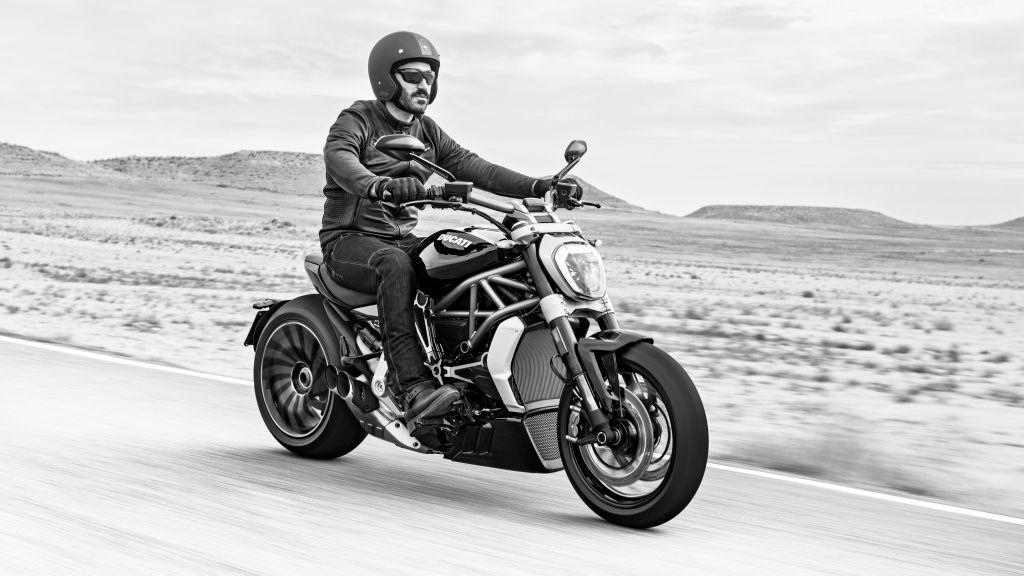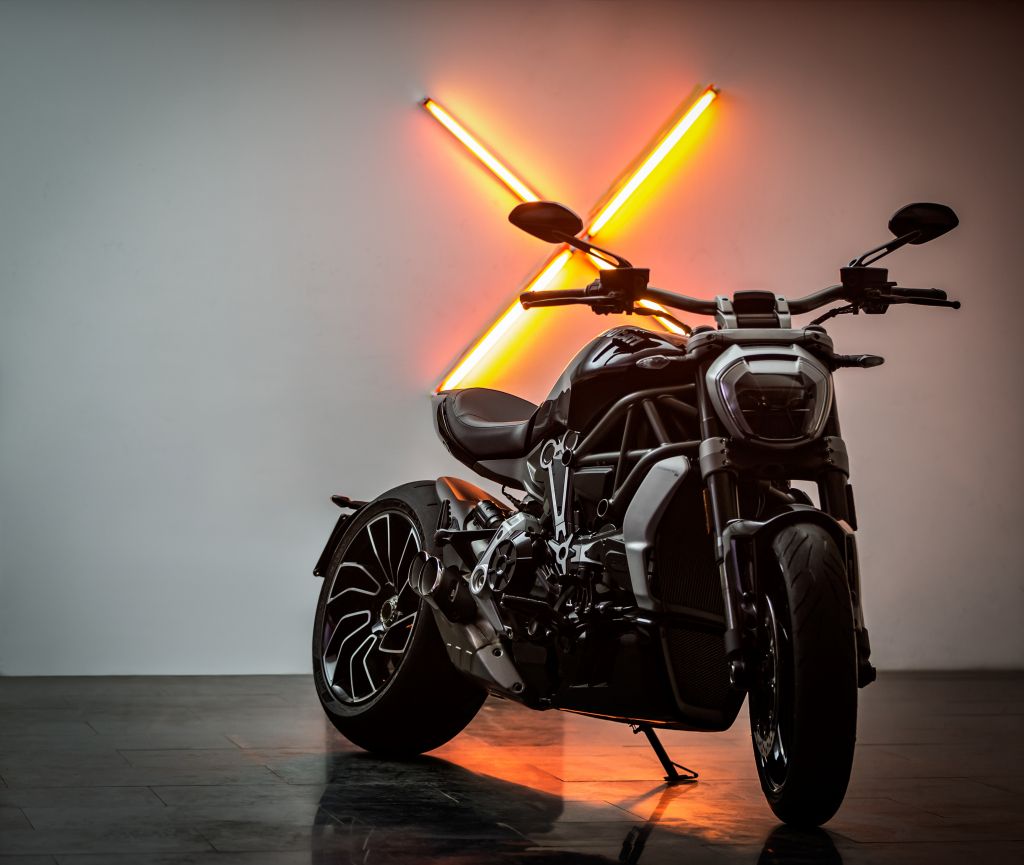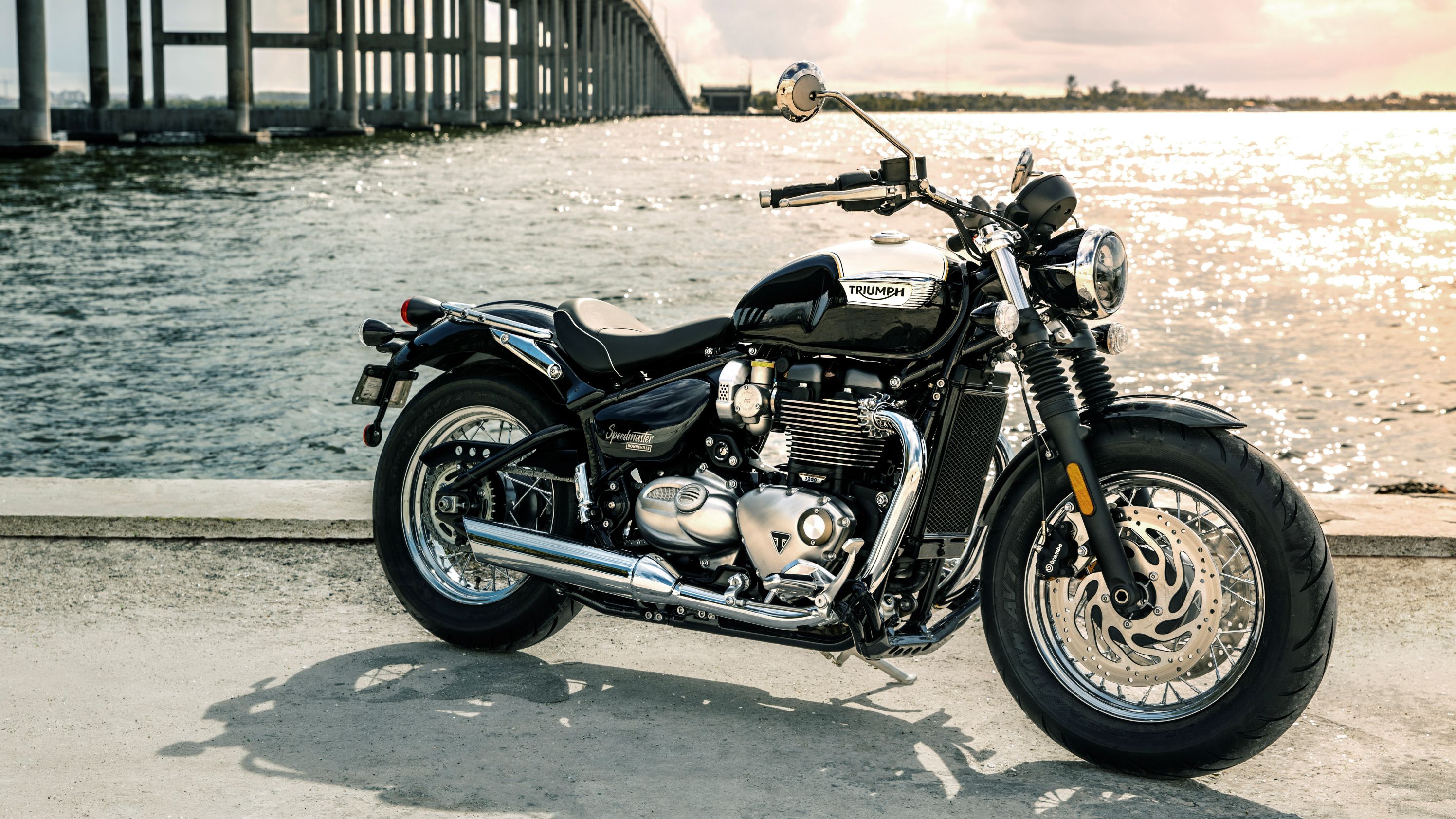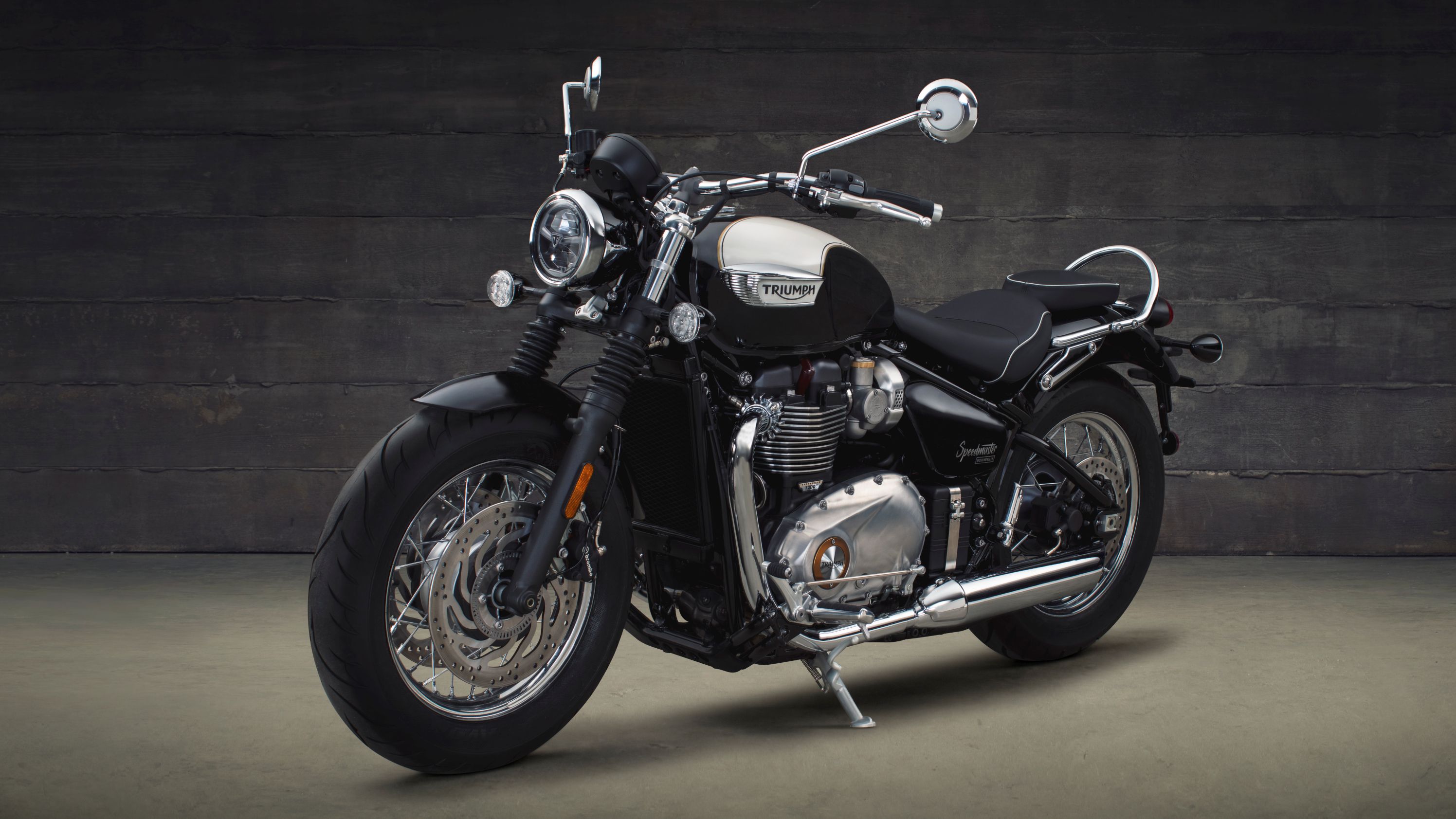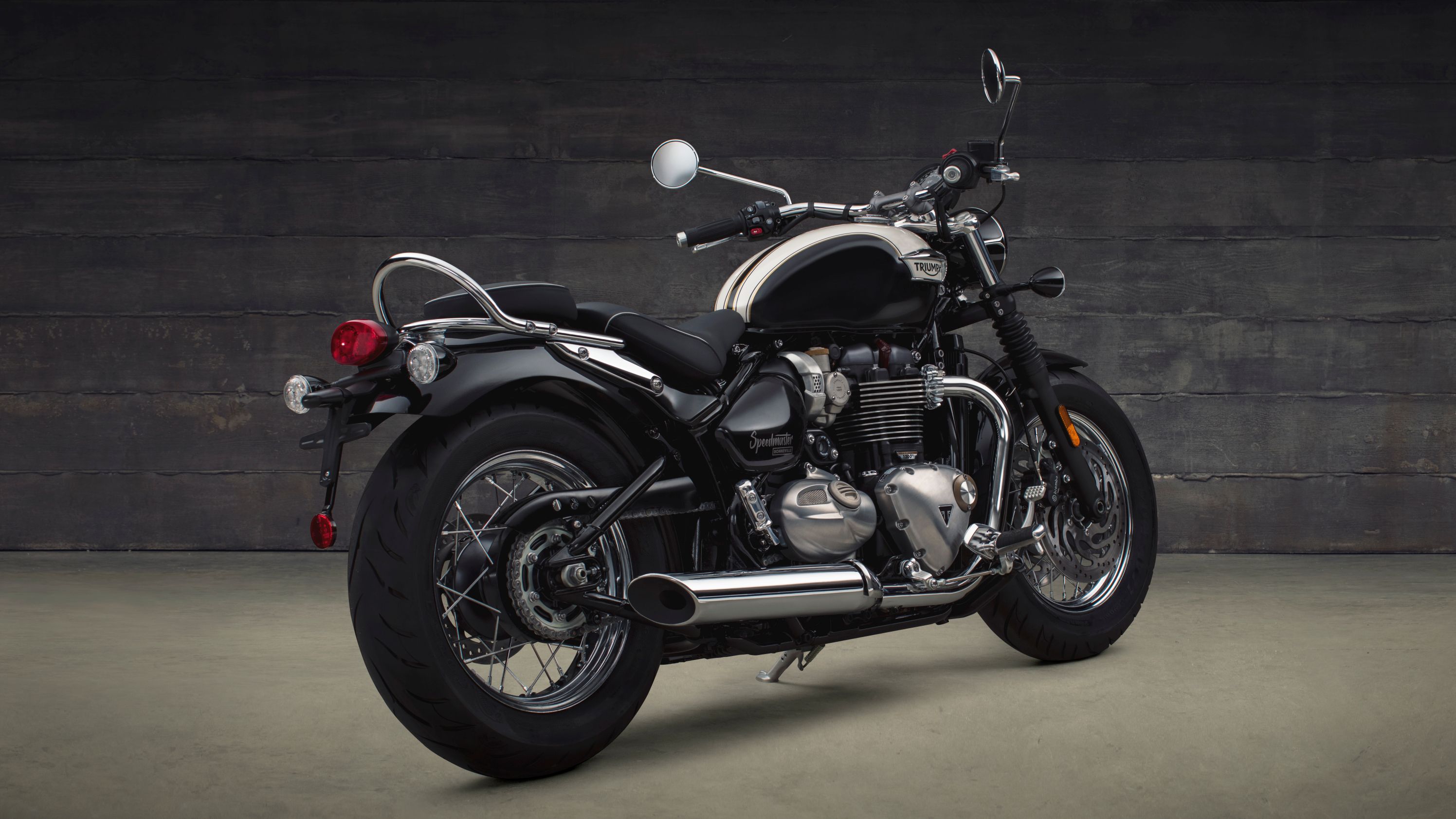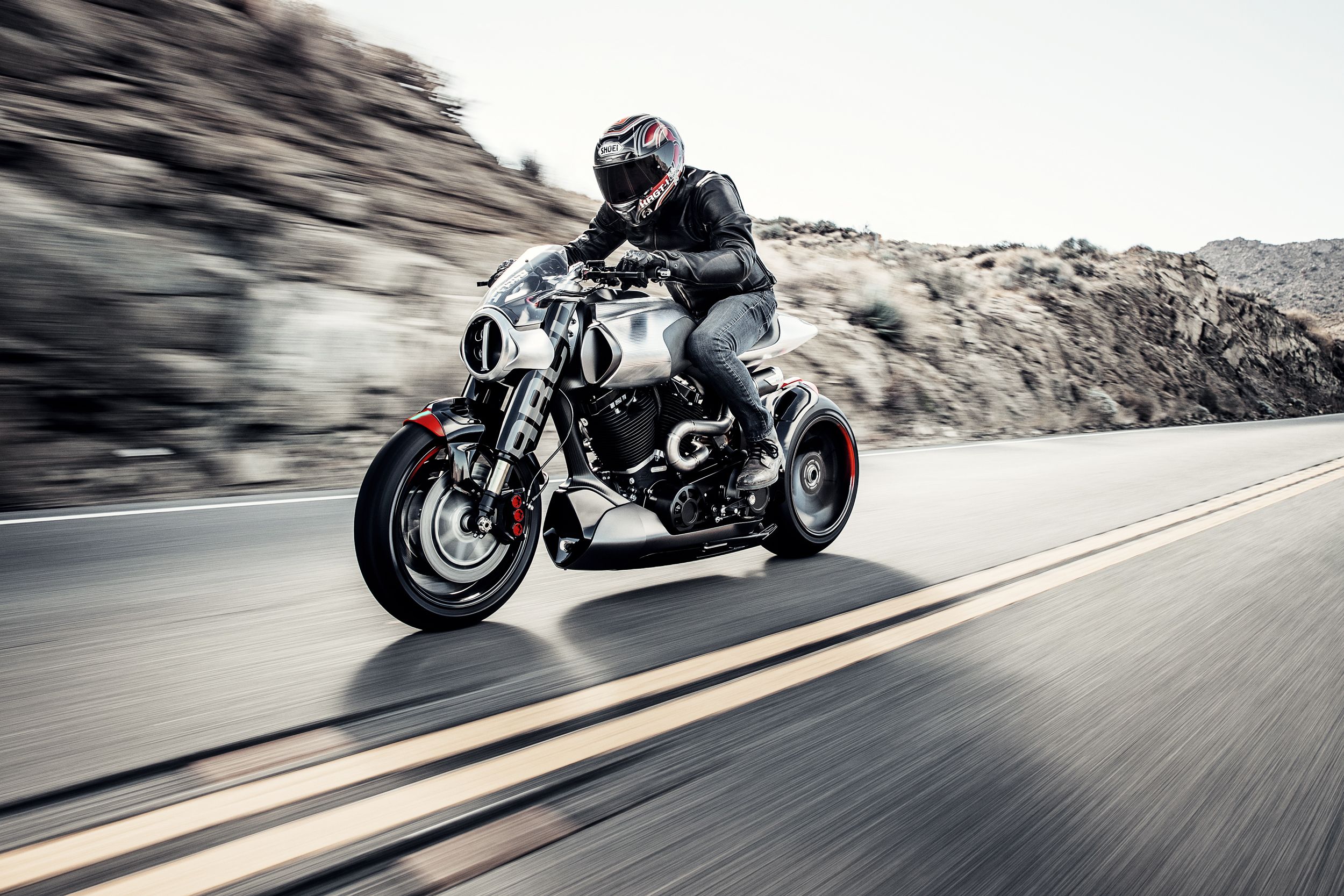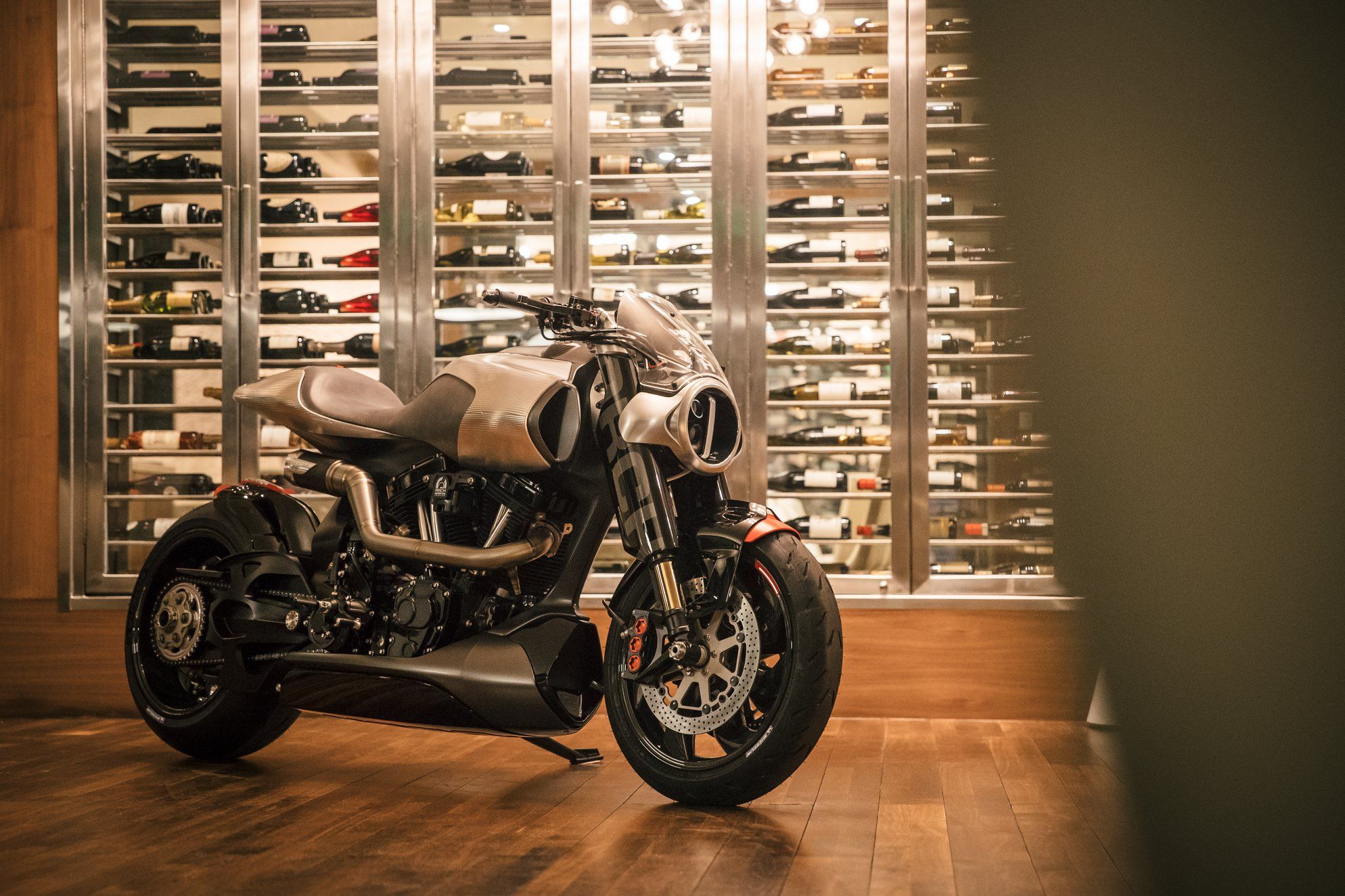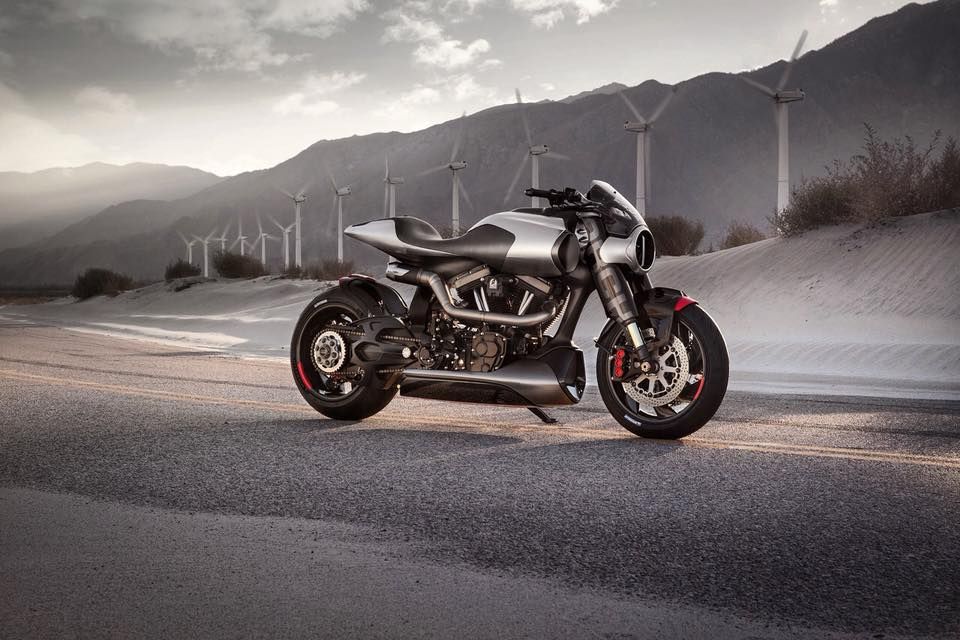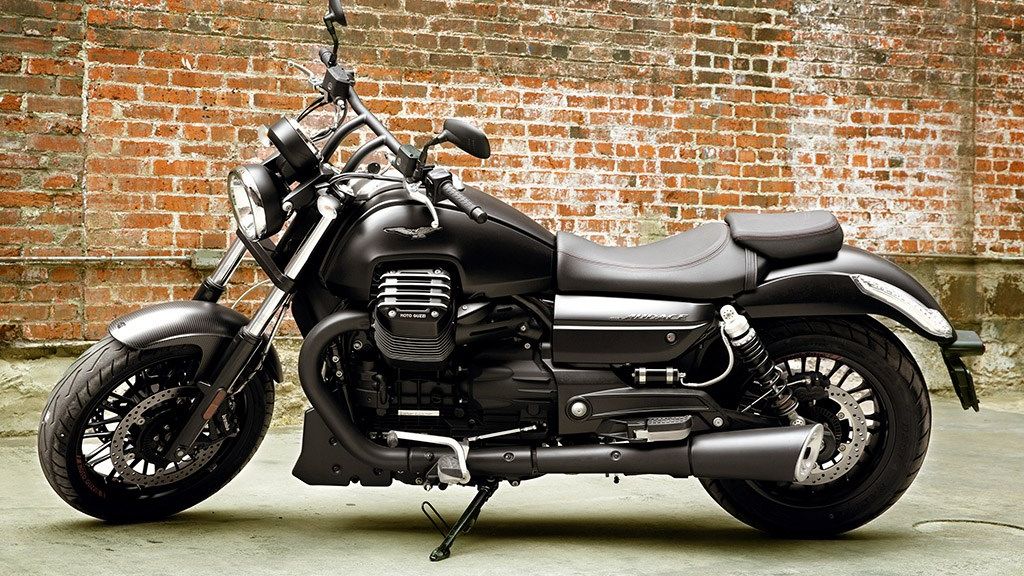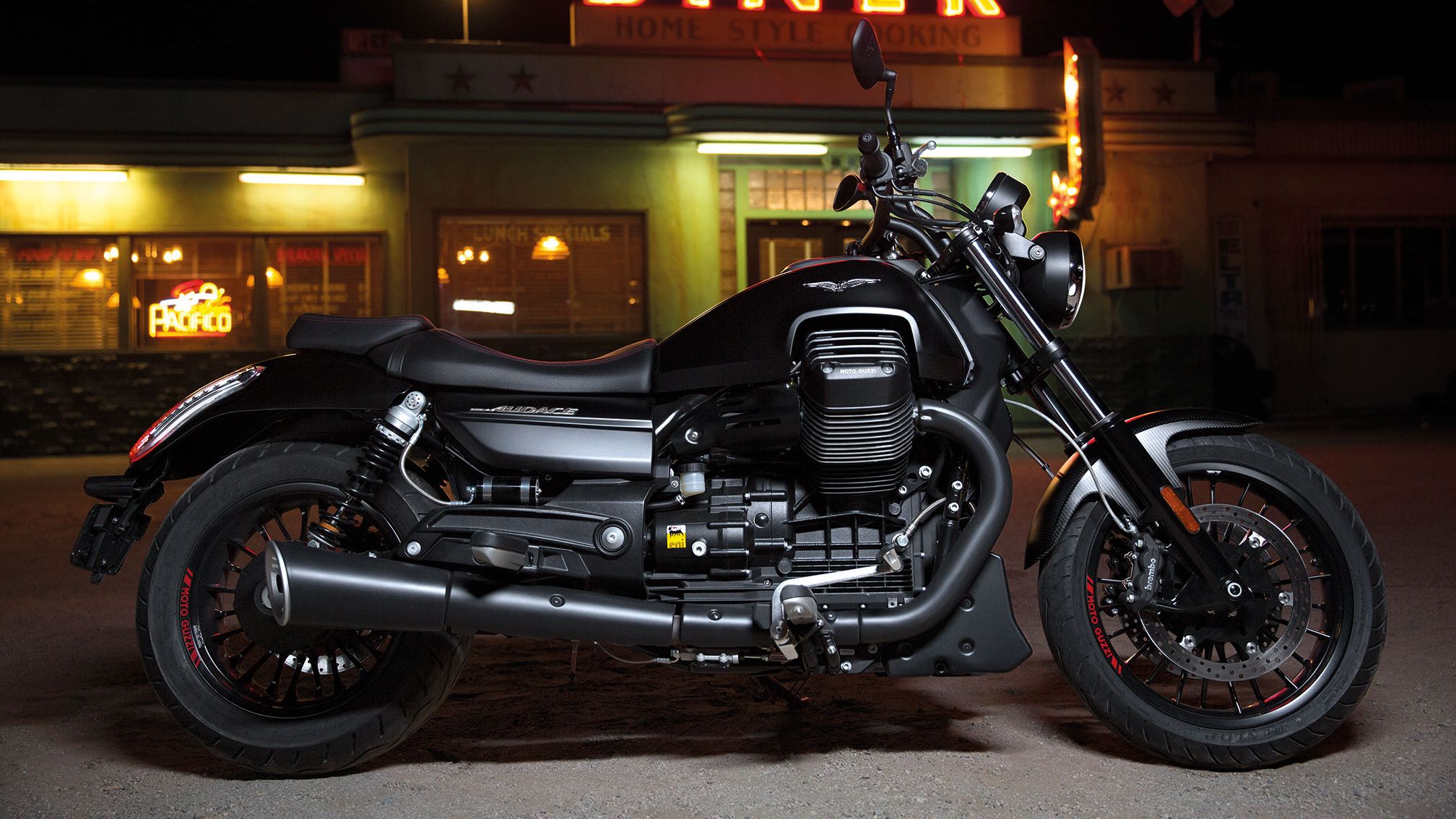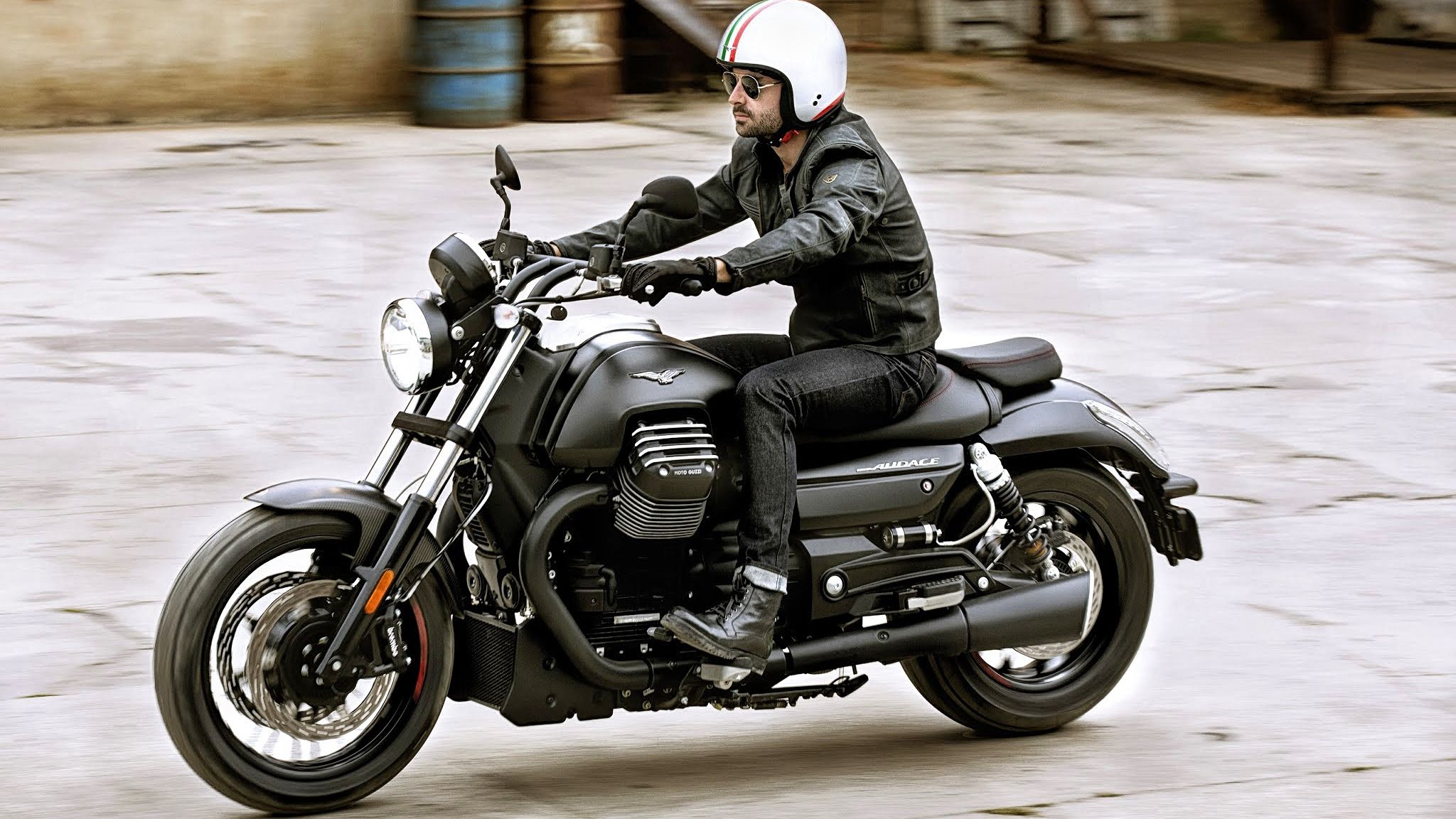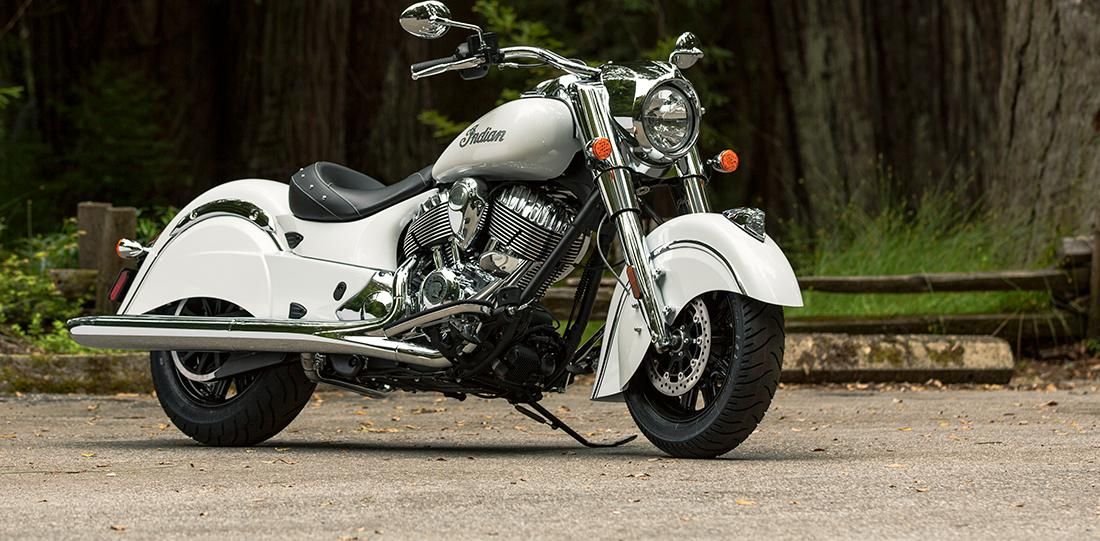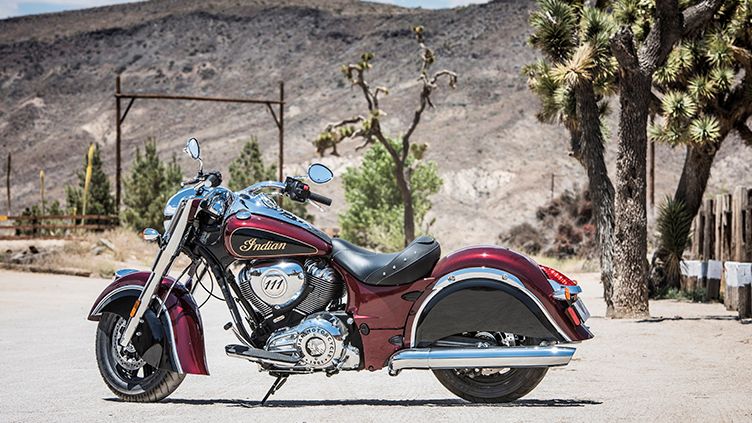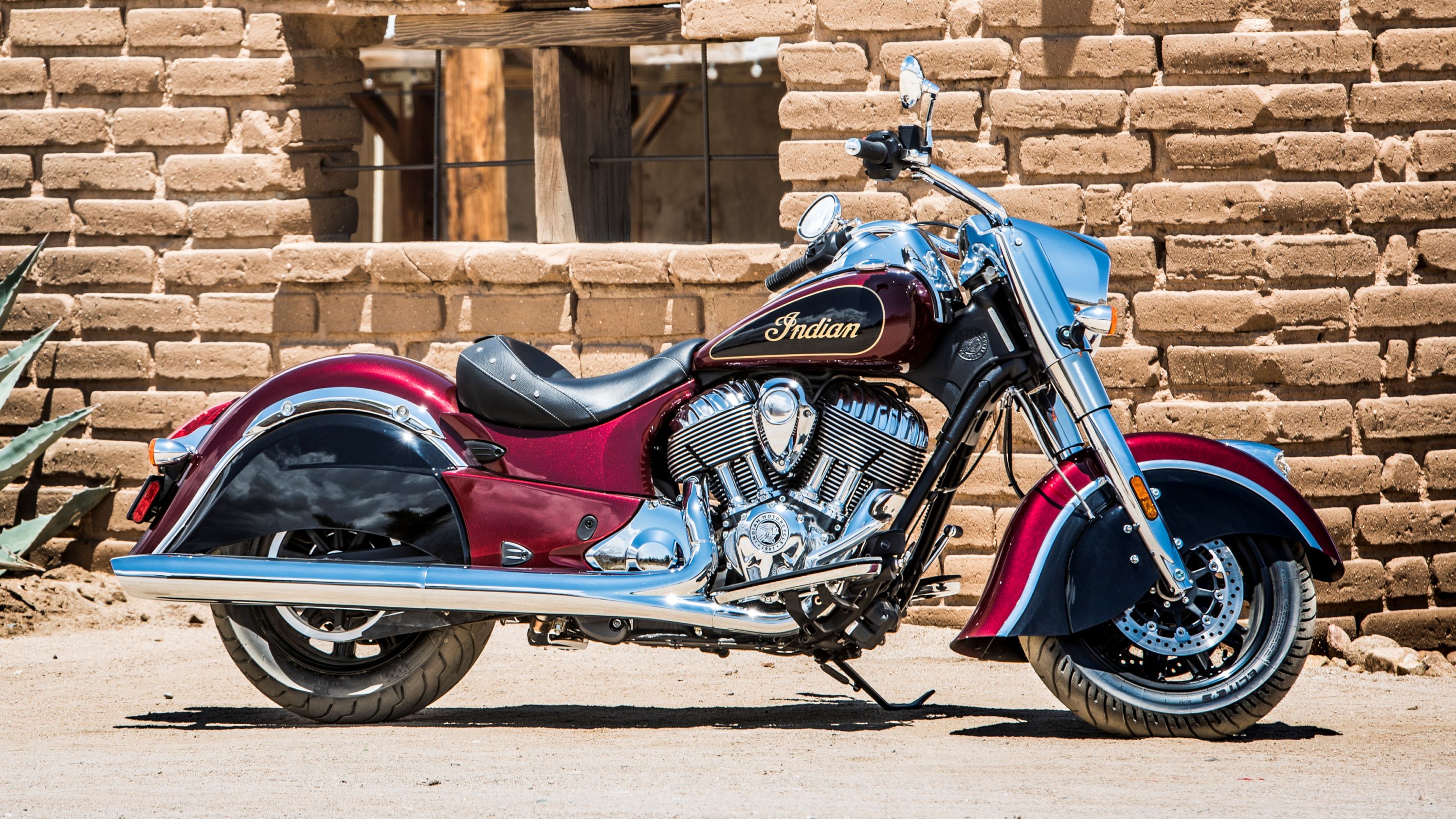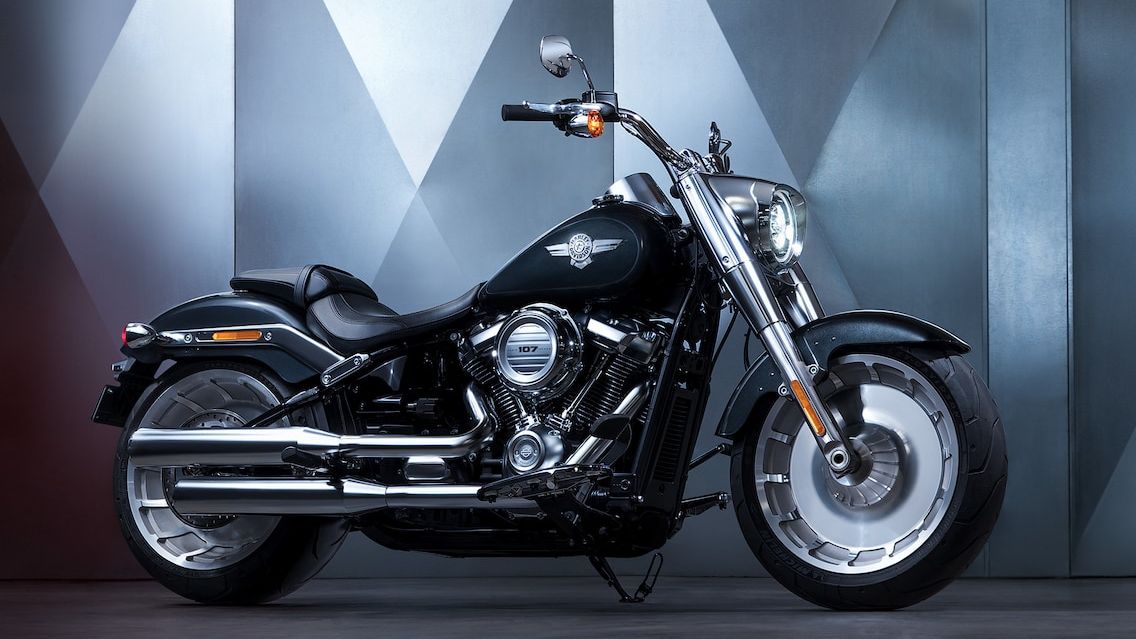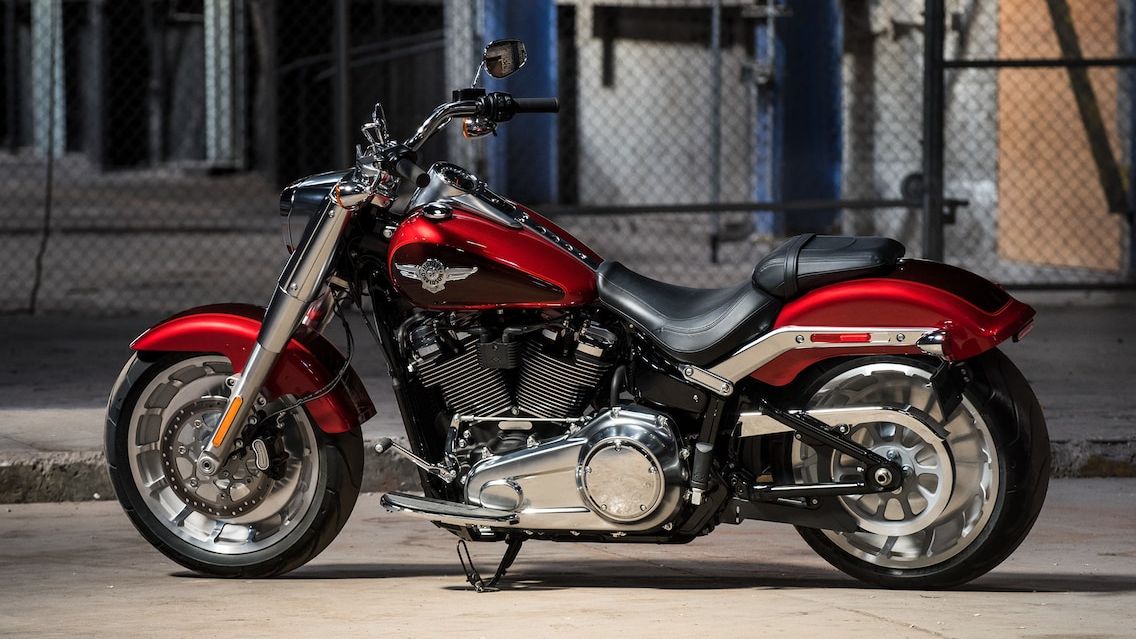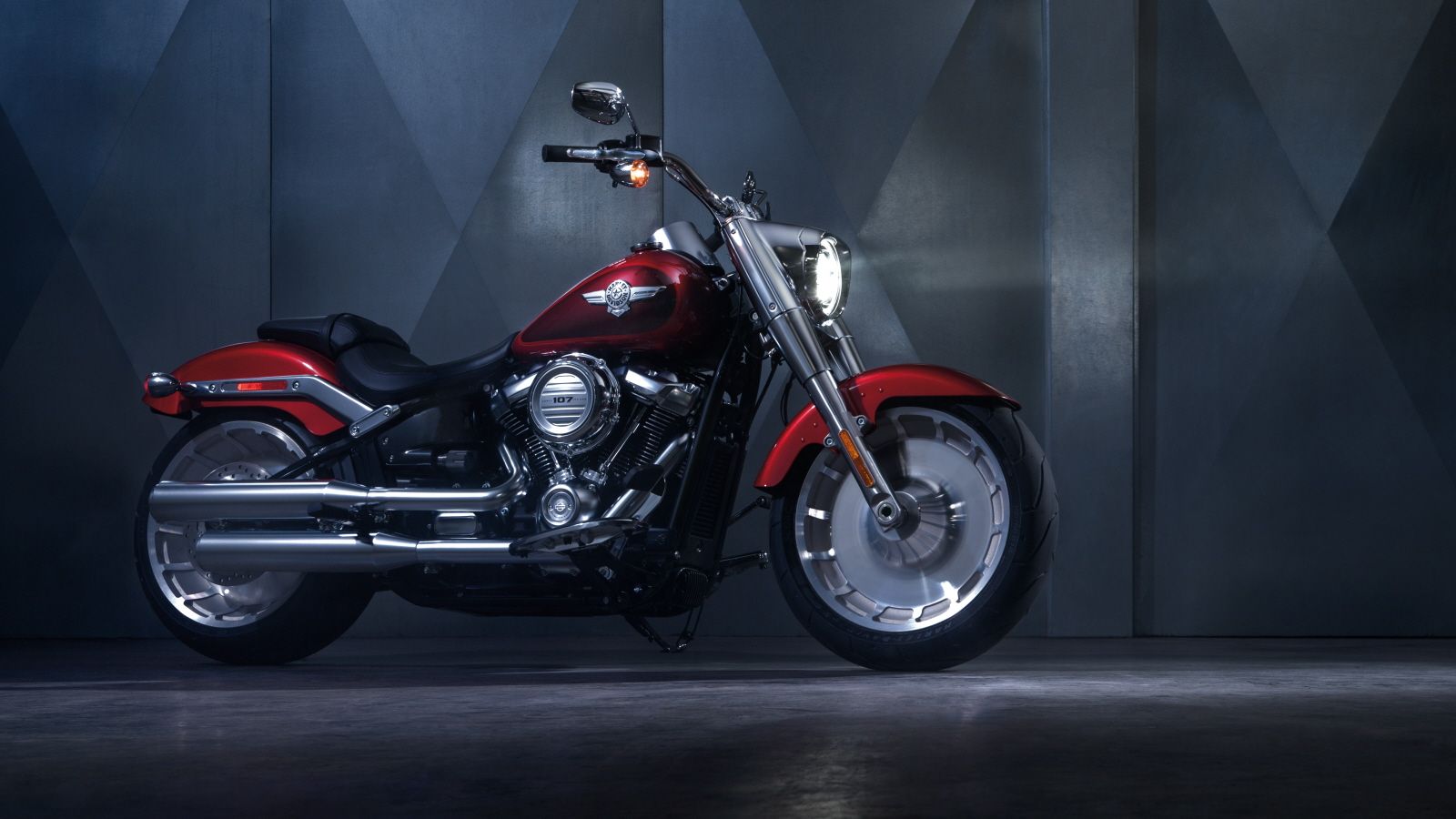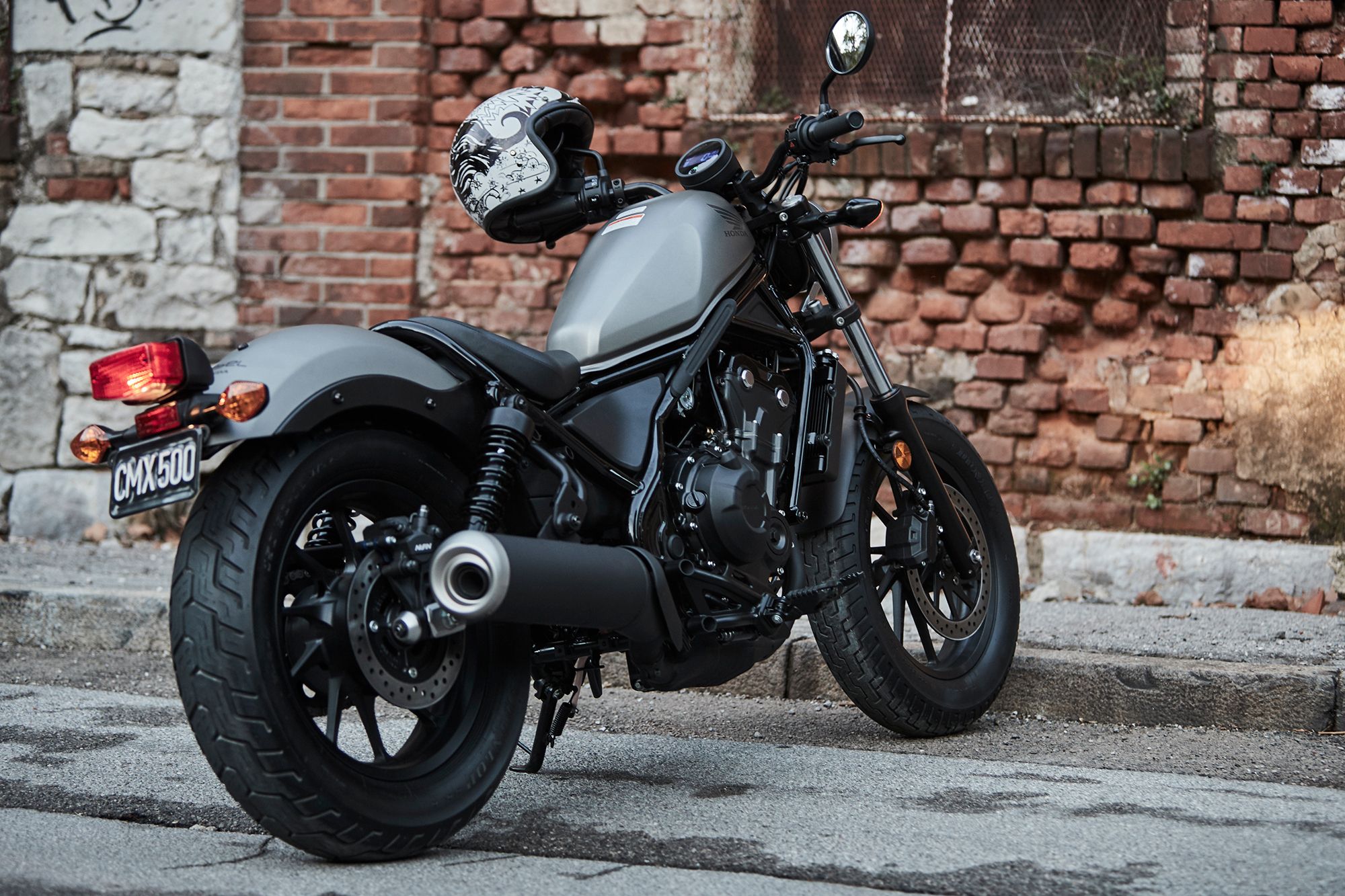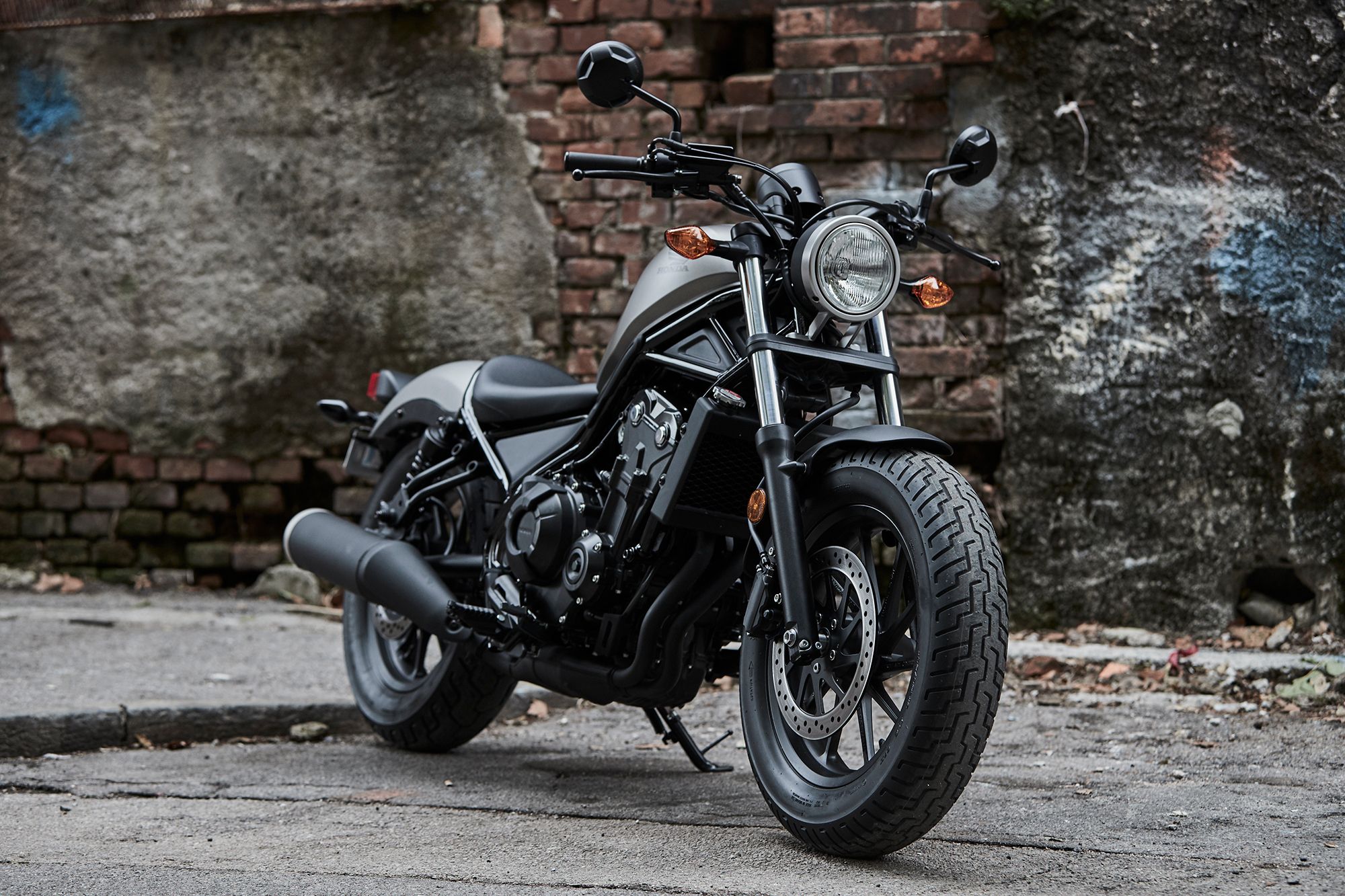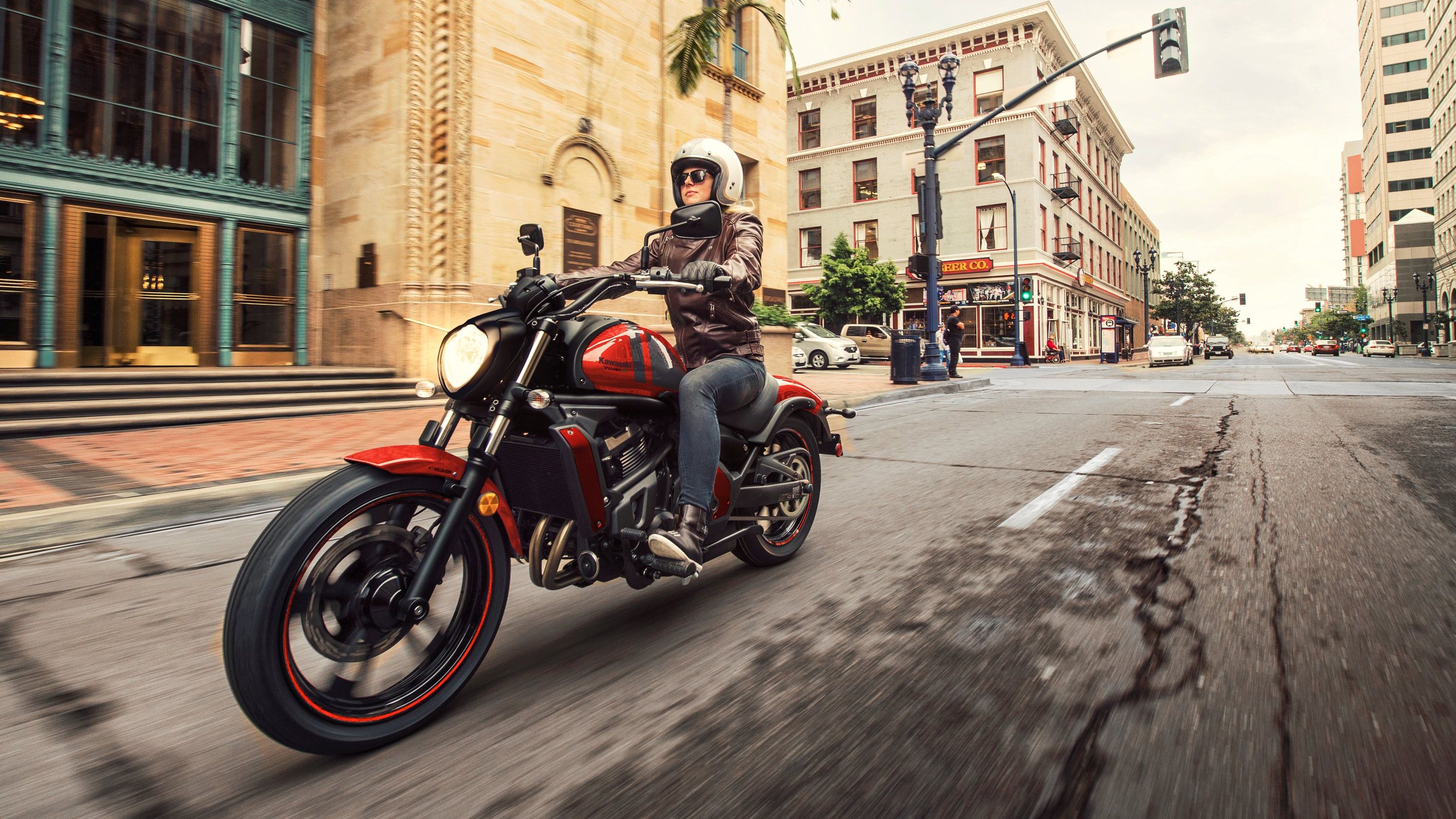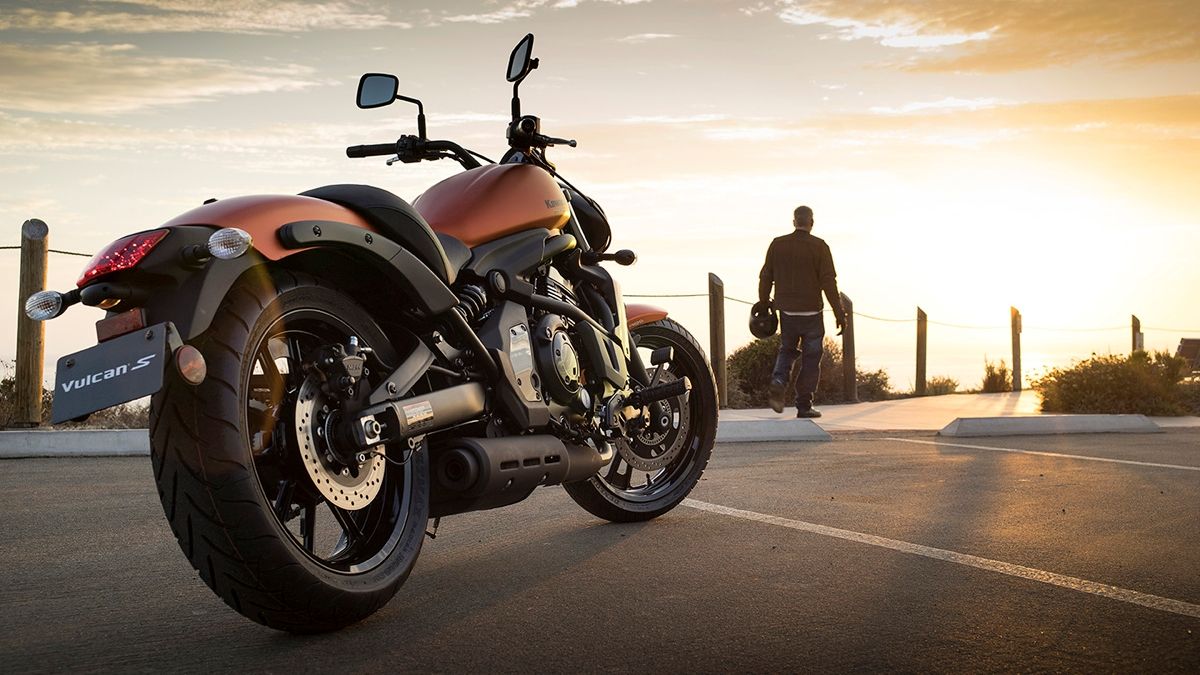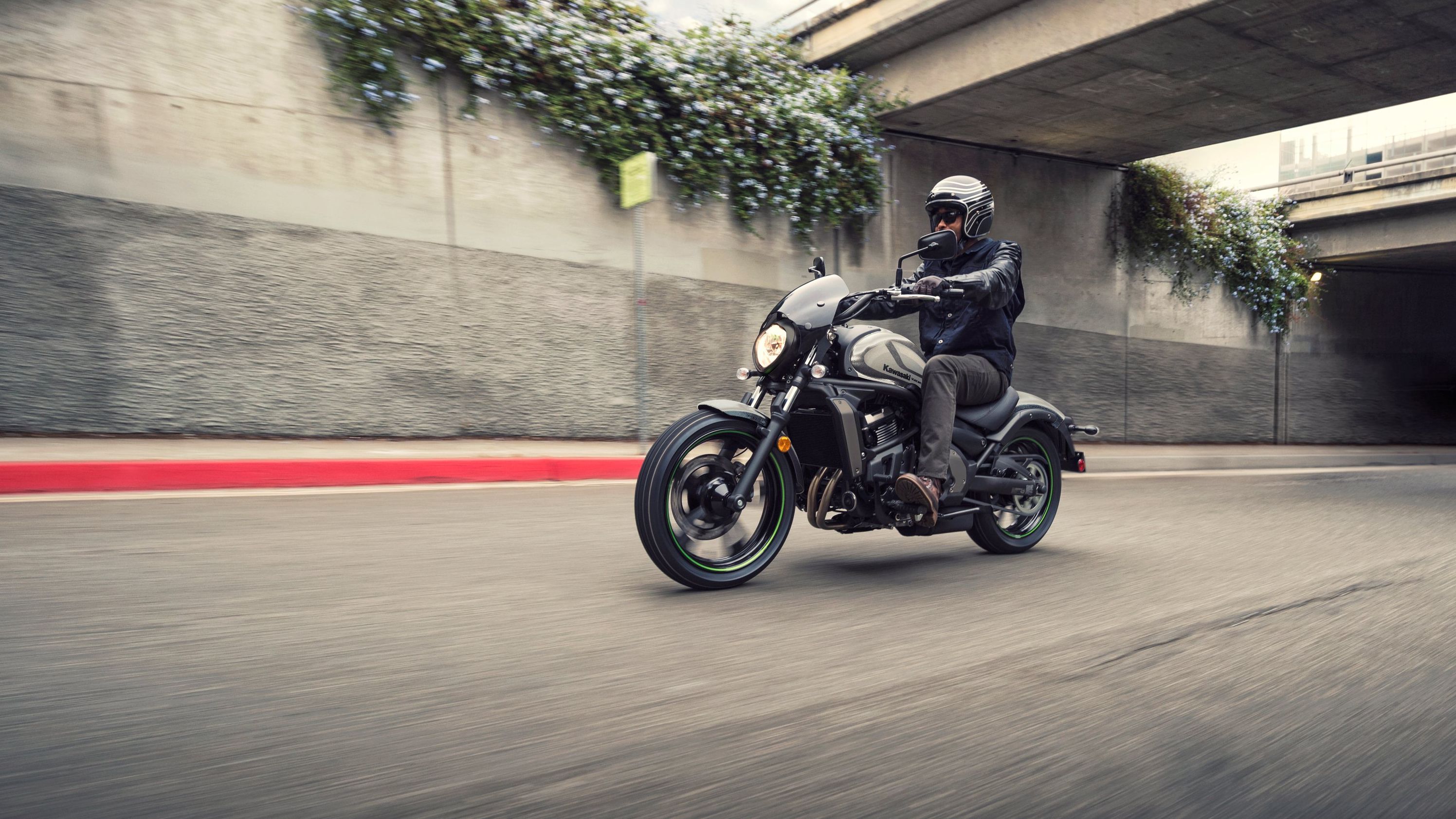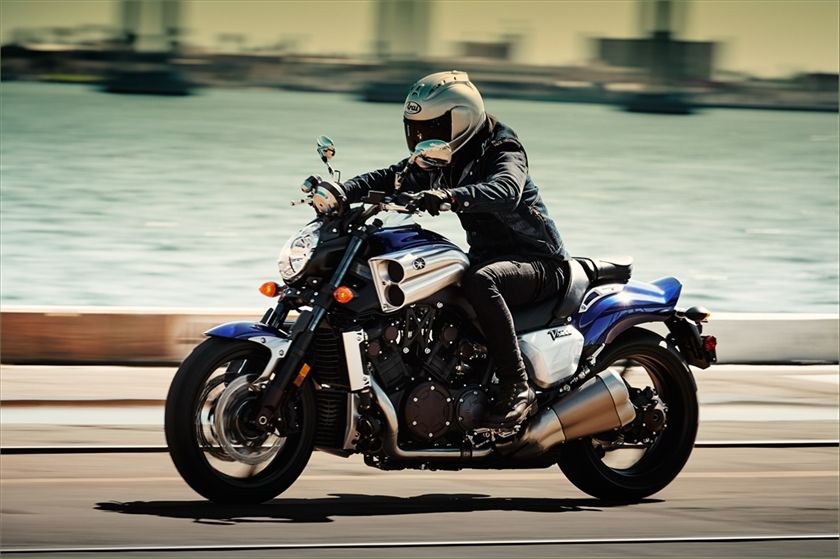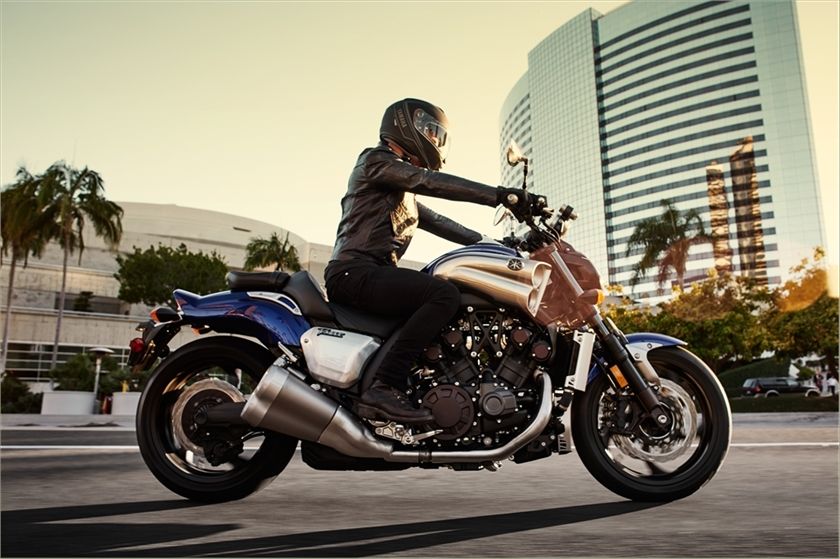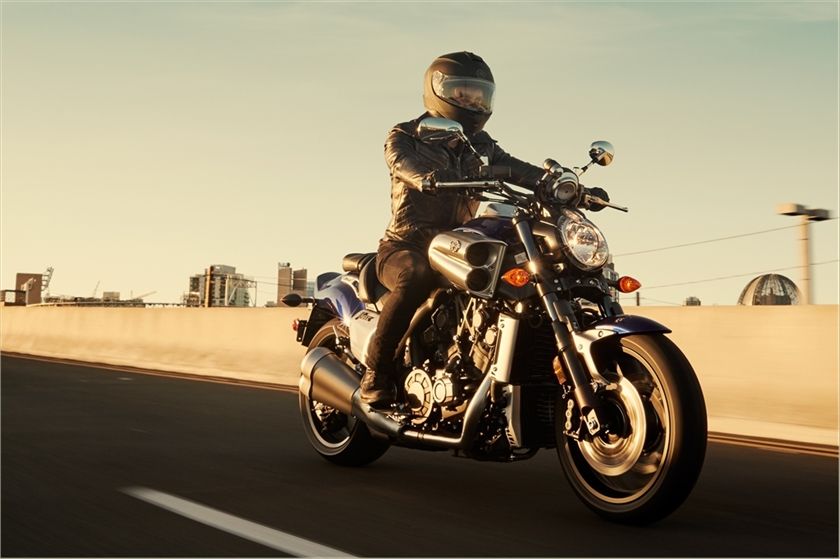Being the closest thing to flying without leaving the ground, Cruisers have been the incarnation of the ‘30s to ‘60s American lifestyles. Large motors with plenty of low-end torque, forward set footpegs, and a laid-back reclined riding position define any modern-day cruisers. Traditionally, large V-twins ran under the hoods, but inline engines have become more common these days.
Here is our list of the cruiser motorcycles of 2018 that gets us to simply cruise, at one with our bike, taking in the sights and smells, the cool air washing over, and supposedly cleansing the soul. Basically defining the concept of motorcycling, cruisers keep us wandering off with just a twist of the throttle to the unknown.
Harley Davidson FXDR 114
After releasing nine new Softails earlier this year, the Milwaukee brand has unleashed a brand new one, and this time, it gets the biggest of the Milwaukee-Eight 114 engines with 1868cc. It’s the FXDR 114, and it comes built around the new platform with 240-section rear tire and lightweight aluminum swingarm.
The FXDR 114 is “Like a drag racer crossed with a fighter jet” which combines the unrelenting power of the Milwaukee-Eight 114 engine, the biggest put out on any of the current Softail models. 90 hp and 119 lb-ft peak torque to lug around 668 lbs. You can be assured of a richer exhaust note pouring out of the neat looking 2-1-1 staggered edged pipes due to the fewer mechanical noise of the powertrain and optimized cover designs and driveline improvements for that aural glory. A 6-Speed Cruise Drive Transmission and a slip and assist clutch provides the rider smooth shifting of gears that help in maintaining fatigue-free long rides.
Harley has recently started ditching so much chrome for blacked-out engines and matte finishes, and they don’t look half as bad. This FXDR is no different. A stubby rear end comes with a small trunk even (nothing big though) and a swanky set of LED light setup at the front gets surrounded by a minimalistic cowling that hides a functional digital dash.
This power cruiser comes with a handful of weight-reduction elements including an aluminum swingarm and plenty of carbon-fiber bits including the front and rear fenders. The rear tire is a massive 240-section hoop, matched to a 19-inch front that is hooked to an Ace thin-spoked alloy rim and a raked 43mm USD fork.
The spec sheet indicates the FXDR is more raked out than the Fat Bob and has a nearly 5-inch-longer wheelbase. Pricing for the new machine will start at $21,349, with paint options adding extra, making it also the most expensive Softail yet. ABS is standard, as is a security system, keyless ignition, and a USB charge port.
Ducati Diavel S
First showcased at the EICMA motor show in Milan 2015, the xDiavel took all eyeballs for a trippy show. Long and low, with sleek and sexy lines, forward controls and a low seat height, this bike was something totally new from the Italian company known the world over for blending impeccable design and high-performance machines. Something like putting purists into a realm of more content and less bitter.
The premium ’S’ model elevates things further with its contrast-cut machined timing belt covers (similar in appearance to the Scrambler) and wheels, DRL, forks with DLC coating, Brembo M50 front brake calipers, a special seat, parts with machine - finished highlights and a lot more which really give the X a polished look.
The DVT setup gives the best of both worlds: a flatter and more linear power character without sacrificing performance. It charges at a peppy 95 pound-feet of torque arriving at 5000 rpm and peaking at 156 hp @ 9500 rpm where the red line is near the 10000 rpm marking. Mated to a slick-shifting six-speed gearbox, top speed is claimed to be above 160 mph and is capable of a 0-60 under 2.5 seconds. It makes use of a conventional belt final drive instead of the typical chain assembly.
It is electronically packed with the brutal Ducati Power Launch (DPL) system, individual engine power maps (Urban, Touring, and Sport), 8-way adjustable traction control and the Ducati’s Panigale style IMU allows total control of the bike in every possible riding situation you can think of getting onto with this bike.
The Thrilling Black x Diavel S currently retails at $ 23,495 and the ’not-so-evil’ Iceberg white will cost you $ 23,795. Ducati offers a 24-month unlimited mileage warranty on your new XDiavel.
Triumph Bonneville Speedmaster
Adding one final puzzle to their Bonneville range, the Brits have revealed another retro silhouette for us to drool over. Christened as the Bonneville Speedmaster, this new British icon is set to bring back the long, low, blacked out silhouette of the American hot-rod culture and give it the British attitude with the category-leading, high-torque Bonneville 1200cc twin plant.
Borrowing cues from the Bonneville Bobber, Triumph’s most successful model in its 115-year history, the Speedmaster builds on the brand’s rich lineage of classic custom models to give us a motorcycle that is now more practical and versatile than ever. Believing in their designs, the blokes at the Hinckley firm have engineered around the ‘hard-tail’ look of the Bobber and typical Bonneville styling. Carried over from the Bobber are the sculpted tank, machined engine fins, carb-styled twin throttle bodies, exhaust setup, minimal bodywork, single clock, and the heritage-inspired battery box.
Triumph’s 1200cc will replace the 875cc that used to run on the previous editions and will remain similar to the one running on the Bobber. The T-120 based engine delivers its 78.2 pound-feet and 77 horsepower smoothly across the RPM range, and even though the torque caps out at a low 4,000 RPM, the engine likes to be wound up for short-shifting urban fun. The engine is mated to a 6-speed transmission with a torque-assist clutch and chain final drive.
Similar to all Bonnevilles’, the Speedmaster too will feature everything from riding modes (Road and Rain) to switchable traction control, single button cruise control, ride-by-wire throttle, ABS, and a torque-assist clutch. Coming to the bike’s handling abilities, Triumph has topped it up with a new 41mm cartridge front forks and a hidden monoshock RSU for unrivaled rider and pillion comfort. Also new is the confidence-inspiring high specification 310mm twin disc front brakes with twin-piston Brembo calipers and a 255mm single disc rear brake with single-piston Nissin caliper.
MSRP on the 2018 Bobber is $11,900, but the Speedmaster will fetch for $ 13,150. Available in Jet Black, Cranberry Red and Jet Black, and Fusion White and Phantom Black, it is complete with the hand-painted gold coach lines.
Arch Motorcycle Method 143
With two models in their existing lineup, Arch Motorcycles expanded their dream project with the brand new flagship model showcased at the EICMA 2017. Called the Arch Method 143, it is a power cruiser that boasts of a powerful V-Twin engine underneath its hood and surrounded by a carbon fiber mono-cell chassis and exquisite materials all around. Carbon-fiber, aluminum, titanium, leather – the Method 143 has got it all.
The unique layering design concept and elegant craftsmanship of the bodywork include fine leather, carbon fiber, and artfully programmed CNC machined aluminum. The company has machined over 200 custom parts out of billet aluminum that makes it look so stunning and raw. Leather has been layered along with the bodywork blending the seat and the knee indents on the aluminum tank area beautifully giving a modern take on styling.
Powering this hunk is a monstrous the T143 (hence the name Method 143) 2343cc V-twin powerplant from S&S which will give the Method 143 an earth-shattering 170 hp. Thanks to the specially designed downdraft injection system and a compression ratio of 10.47:1. This makes the 160 hp Ducati Diavel feel like a puny little thing. The Method might get the six-speed Baker transmixer similar to the one used on the KRGT-1, and boasts a compact, high-torque main shaft with a chain final drive to make the connection to the rear tire.
The carbon-fiber monocell chassis with the integrated fuel cell is the first of its kind on a production model. This keeps the weights down and provides insane stability at high-speeds, an area where the owners of the Method 143 will usually be at. To keep this bad-ass wickedness in control, the chaps at Arch have equipped the Method with Ohlins proprietary FGRT series fork, fully adjustable at the front and an Ohlins proprietary rear shock. Braking department gets purpose built ISR dual six 30mm piston Monobloc radial mount calipers with ISR floating dampened discs at the front and Dual ISR four piston Monobloc radial mount caliper with ISR semi-floating disc at the rear.
We have no official word on the pricing of this mean machine. But be sure you do have a fat bank balance because the Method 143 will be coming with a six-figure price tag. Other information on specifications is sparse. But we know that Arch will be making a limited run of just 23 units of such a special production motorcycle that feels like a custom built bike already.
Moto Guzzi Audace
Moto Guzzi’s “dark soul” the Audace, in theory, is a cruiser. But when Guzzi decided to provide it with the award-winning v-twin newly developed by the historic marque, the Moto Guzzi California, out came a pro-street blacked-out tire-burner Audace. Termed “ostentatious, muscular and fierce” by Moto Guzzi, the Audace looks like it means business. It’s got an unmistakable aggressive stance and the muscle bike styling that screams a sense of power.
The carefully crafted details are there as well including the carbon front fender, red Moto Guzzi logo on the wheels, classic MG tank badge, and the seat with contrasting red stitching. Audace comes with a wide, semi-gloss black powder-coated drag bar adding to the aggressiveness.
Carried over from the award-winning Moto Guzzi California, the Audace is armed with 1,380cc, longitudinally mounted, V-twin, fuel-injected and air and oil-cooled motor. The classic looking engine includes a very modern head design with four valves per cylinder and a 10.5:1 compression ratio. Armed with a pair of 104 x 81.2mm cylinders, it punches a flat torque curve of 90 lb-ft at 3000 rpm and powers at 95 bhp at 6500 rpm.
Keeping the Audace under control is the Dual 320 mm Brembo radial calipers with 4 pistons brakes acting alongside the conventionally mounted 45mm forks and dual shock adjustable absorbers. ABS keeps the rider from getting into too much trouble with these powerful deceleration devices. MGTC traction control system intervenes whenever you get pumped, and the cruise control allows you to have a more relaxed riding experience.
The Audace is available in black, or mostly black with a red fuel tank, and rolls for $16,390 MSRP. I haven’t seen a price on the Carbon yet, but it’ll be close to that, I’m sure. A vast range of customizable accessories is made available to the customers who like to splurge on getting the most out of their beloved machine or to make a style statement.
Indian Motorcycle Chief Classic
The base model cruiser in the Indian Motorcycle lineup, the Chief Classic has the styling and valenced fenders that identify it as classic Indian with rider amenities and features such as ABS, cruise control, keyless starting, electronic fuel injection and a manually-adjustable single-shock swingarm.
Bling is the thing on the Chief Classic. The folks at Indian chromed everything that could be chromed. For comfort on the road, add a quick-release low windshield to control wind buffeting. You can install and remove the windshield without tools. The keyless ignition relieves me of fumbling with the key. I can start the bike with the key fob in my pocket or use a code I pre-programmed in the ignition system.
Designed from the ground up, the Thunder Stroke 111 engine used in the Chieftain makes way here too with its 1811cc 490 V-Twin capable of belting out 73bhp of power and 119 lb.ft of torque. The engine breathes through a 54 mm throttle body and transmits power to a 6-speed gearbox through cable-actuated clutch having a relatively light pull.
Suspension leverages are not carried out by the forks previously available on the Chieftains’. This Elite version gets a new cartridge type 46 mm telescopic forks front end having 119 mm of travel, and the single rear pneumatic shock can be adjusted for load or preference with 114 mm of travel. To halt this 855 lbs monster, you need heavy performers, and hence dual four-pot calipers bind the front 300mm brake discs, and a twin-pot caliper binds the rear 300mm disc. ABS will come as standard, knowing which you can brake under control in any situation.
MSRP on the 2018 Chief Classic is $19,499, and it’s only available in Burgundy Metallic. Indian covers your Chief Classic with a two-year limited warranty as long as you register with Indian at the time of purchase. If you don’t register, you’ll be SOL on any warranty work later.
Harley-Davidson Fat Boy
Low, wide and intimidating. Ever have these been the hallmarks of the Fat Boy line, and it’s still true of today’s subjects. This bottom-heavy look is something of an illusion created by the visual weight of the 18-inch, solid-disc Lakester rims. While there are still a handful of classic chrome parts to be found, Harley used “satin chrome” liberally throughout the design for a nice change from the same-old same-old, and I'm digging it.
From the sides, you will be greeted by the overdose of chrome on the engine, dual exhaust pipes, and side body cowls. The bike gets the typical sloping fuel tank with the instrument console mounted on it. The tank also gets the premium 3-D medallion of Harley Davidson on both the sides of it. The bike gets a high mounted handlebar like on the old school cruisers of the yesteryears, with the chrome rear view mirrors mounted on it.
It’s difficult not to be enamored with the Twin-Cooled, 450 V-twin mill harvesting 1745cc. The engine boasts of 154 bhp @ 5000 rpm of peak power and 104.7 ft-lb @ 3250 rpm of torque enough to get you to a 60 mph faster than ever before. The 107 gets re-tuned ride-by-wire system and more sensitive knock sensors for gaining all the torque on offer. A 6-Speed Cruise Drive Transmission and a slip and assist clutch provides the rider smooth shifting of gears that help in maintaining fatigue-free long rides.
Then there is the handlebar whose comfortable swept bars, and an upright riding position can accommodate a wide range of riders. A totally new re-engineered dual bending valve with beefy 49mm Showa Dual Bending Valve front forks front and rear suspension with easily-adjustable emulsion shocks also donned the 2018 line-up. They can be adjusted with just a turn of a knob, and bigger pins will give improved damping performance. 32 mm, 4-piston fixed front and rear Reflex Linked Brembo Brakes with ABS that catch on to twin 320mm discs.
As ever, the Motor Company follows a tiered price structure based on color and engine selection. At the bottom of the scale, the Fat Boy 107 in Vivid Black will run you $18,999 while the 114 will set you back $20,299 for same. The second-tier “Color” option rolls for $19,399 and $20,699, respectively, and the two-tone package commands $19,749/$21,049. Available only to the 114-inch version for $21,199, the 115th Anniversary Edition sports the Legend Blue Denim paint with an asymmetrical eagle graphic on the tank that really gives it a look all its own.
Honda Rebel 500
For more than three decades, the Honda Rebel has been the quintessential beginner's bike - lightweight, easy to maneuver and more importantly, cheap to buy and maintain. Over the years, the Honda Rebel has been quite a success as a beginner's motorcycle in the US, offering cruiser styling and a manageable engine which isn't intimidating to new riders, at the same time providing good fuel economy.
The original Rebel was released in 1985, and was designed to reflect the custom culture popular among cruiser riders at that time, and the bobbed fenders, low seat height, and buckhorn handlebars struck a chord with the riding public. As popular as it was then, the design was getting rather dated as years went by.
The Rebel 500 gets the liquid-cooled parallel twin from the 471cc CBR500, which makes around 45bhp and 44Nm of torque. It is a four-valve, DOHC, fuel-injected engines which have been retuned for better low-end grunt. A six-speed gearbox keeps the rpm in the usable range for both models, and unsurprisingly, we have a standard clutch with no slipper or hydraulic-assist in evidence.
It features a new trellis frame, 41mm telescopic front fork, twin rear shocks, 16-inch wheels. Cast 16-inch wheels mount the 130/90 front and 150/80 rear hoops, and I’m happy to announce that Honda finally abandoned the rear drum brake on the Rebel family. A single-pot caliper binds the 240 mm rear and 296 mm front disc, and both the 300 and 500 have ABS as an available option.
These new models retain the affordability factor of the originals with reasonable price tags. For 2018, the Rebel 300 rolls for $4,499 without ABS and $4,749 with. MSRP on the 500 is $6,199. ABS adds $300 to the price.
Kawasaki Vulcan S
The Vulcan S is a cruiser motorcycle which is based on the same platform on which the Ninja 650R, as well as ER-6N, are built. A typical Japanese cruiser, the ER-6N boasts of both modern and retro elements which make it a distinctive motorcycle. The powertrain as well as chassis have been shared with the Ninja 650R, which already has gained a cult status among the motorcycling enthusiasts in the country.
The Vulcan S gets a tear drop shaped headlamp which gets a silver finish surround. Like most of the cruisers, the front fender is minimalist and lacks any sharp cuts or curves. The turn indicators look dated, though – Kawasaki could have opted for round indicators to go with the theme. Though the Vulcan S comes with only a rider seat as standard, Kawasaki does offer a pillion seat as a part of the optional equipment.
The Kawasaki Vulcan S is built on the same platform which underpins the Ninja 650 as well as the ER-6N. So, it is pretty natural that this new cruiser shares its powerhouse from the latter two motorcycles. The bike sources its power from a four stroke, liquid cooled, parallel twin, 649cc motor, which churns out 61 bhp of maximum power and 46 lb-ft of peak torque. The engine comes coupled to a six-speed gearbox, which transmits the power to the rear wheel through a chain drive.
The Vulcan S retains the frame, suspension, and brakes from the Ninja 650. Built on a double pipe perimeter frame, the Vulcan S comes fitted with 41mm front telescopic forks and lay-down offset rear monoshock. The suspension is tuned so as to provide a softer ride, without compromising much on the front of dynamics. The operation of braking is taken care by single disc brakes at both front and rear, which also come with the optional ABS.
MSRP on the Vulcan S is $7,099 without ABS and $7,499 with it. The SE goes for $7,699, and the Café will run you $8,099. While I’m not digging the new paint choices as much this year, color is at the bottom of the priority list much of the time. Kawasaki covers your Vulcan with a 12-month limited warranty, and you have the option of picking up additional coverage through Kawasaki Protection Plus for 12, 24, 36, or 48 months.
Yamaha Vmax
The Yamaha VMax needs no introduction to the world of motorcycling enthusiasts. The motorcycle has gone on creating new benchmarks and huge fan following for itself, with the enormous amount of power and torque, capable dynamics, and most importantly, its muscular appeal. The VMax has been existing in the market for over three decades now, and the regular facelifts and changes which the motorcycle has been receiving has managed to keep the original appeal of the motorcycle still intact.
The motorcycle blends in the aura of old-school cruisers and the charm of new-age cutting-edge streetfighters, the end result of which is a brawny motorcycle to fall for. The design of the traditional ovular, teardrop-shaped headlamp has been tweaked a bit, with redesigned headlamp unit and black treatment for headlamp housing, but it continues to get a small pilot lamp at the top of the headlamp unit. The chopped front fender with is a piece of art in itself, though it misses out on the beautiful aluminum inserts as before.
Powering the mammoth Yamaha VMax is an equally monstrous liquid cooled, DOHC, four-valve, V-4,1679cc engine, which is the same powerhouse as before. Coupled to a six-speed gearbox, this powerhouse generates 200 bhp of power and 123 lb-ft of torque, easily making it the fastest and most powerful cruiser motorcycle available on sale across the world. The engine is now fitted with iridium spark plugs, which promises efficient and optimum fuel combustion at all engine speeds.
The motorcycle is equipped with 52mm cartridge-type hydraulic telescopic forks with oxidized titanium coating at the front and a hydraulic monoshock at the rear. The bike comes with 320mm dual disc brakes at the front and 298mm single disc brake at the rear, coupled with an efficient ABS unit.
You can ride off on a VMAX for $17,999 with a one-year limited warranty, but only in Rapid Red for 2017 or Matte Raven Black for 2018. Price and performance both seem to place this ride in the “upgrade” category, and would make a good ride for someone with some experience looking for a second, or third, ride.

